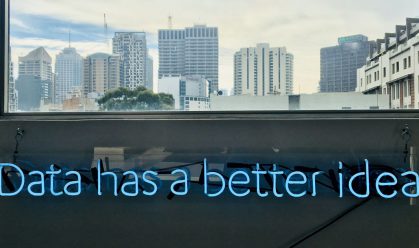If I asked you to tell me about social media marketing, you’d probably describe an e-commerce brand promoting its products. Or maybe a B2B company using social platforms to generate leads.
But those aren’t the only use cases for social – far from it.
Social media for government agencies can be a key tool for educating their audience, explaining the work they do and the value it provides.
The challenge for these public bodies is to communicate in a way that’s creative, engaging, and exciting, without falling short of the standards people expect from taxpayer-funded organizations.
That can be a tough brief to fulfill, but here are 30 examples of local, state, and federal government agencies that do it extremely well.
1. FBI Little Rock
Think about the FBI and it’s hard not to picture a Will-Smith-in-Men-in-Black type figure, dressed in shades and a dark suit, with a no-nonsense expression.
Unsurprisingly, the reality is a little different. The FBI employs about 35,000 people who perform a wide range of roles – often without wearing sunglasses!
Clearly, there’s a lot of confusion around what the bureau actually does. Look up the FBI on Answer the Public, a tool that uses autocomplete data to identify what people are searching for on any given topic, and you’ll find an array of questions related to the organization’s role and responsibilities:
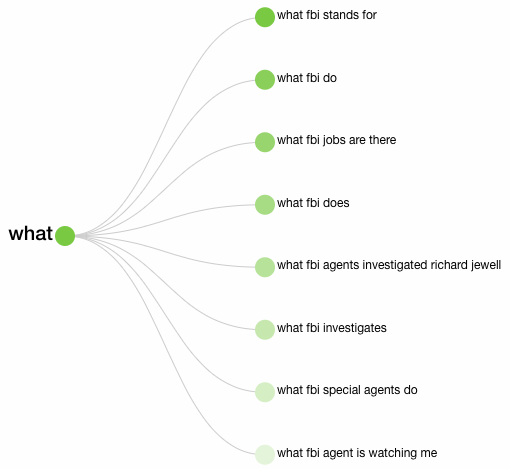
As such, the FBI’s numerous social platforms have an important part to play in lifting the lid on the bureau’s inner workings.
The FBI Little Rock Twitter account is a great example of government social media. Using the hashtag #DayintheFBI, it regularly showcases some of the lesser-known tasks performed by its employees, such as maintaining radio towers and communications equipment:

What’s more, it frequently deep-dives into specific topics, using its Twitter presence as a hub of valuable information on issues such as human trafficking.

2. NASA
When it comes to crafting engaging social content, NASA clearly has an advantage. Space exploration is exciting, and people naturally want to know about it.
However, that’s still no guarantee of a high-quality social presence. Without a well-planned social strategy and a creative approach to communicating often complex topics, NASA’s Twitter feed could be as dry as the surface of Mars.
The agency uses a range of tactics to keep its audience engaged.
Firstly, it publishes content you can’t find anywhere else. When NASA makes a new breakthrough or hits a key project milestone, its Twitter feed is the place to look.
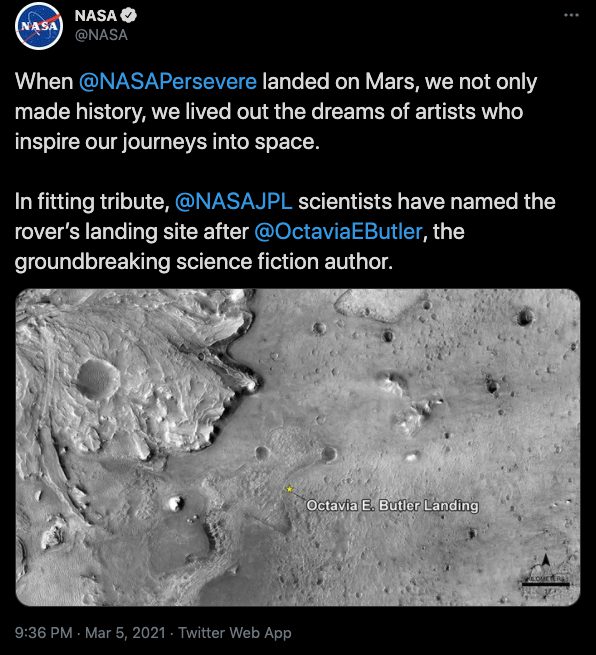
Secondly, it makes use of a wide range of content types, from gifs and videos to photos and links, to share further information.
And that’s not all.
NASA isn’t afraid to jump in on relevant topics that aren’t unique to the work it’s doing, helping the organization put itself at the heart of wider conversations.
Its social media team is clearly always looking out for these sorts of opportunities, as demonstrated by this tweet on National Pi Day:
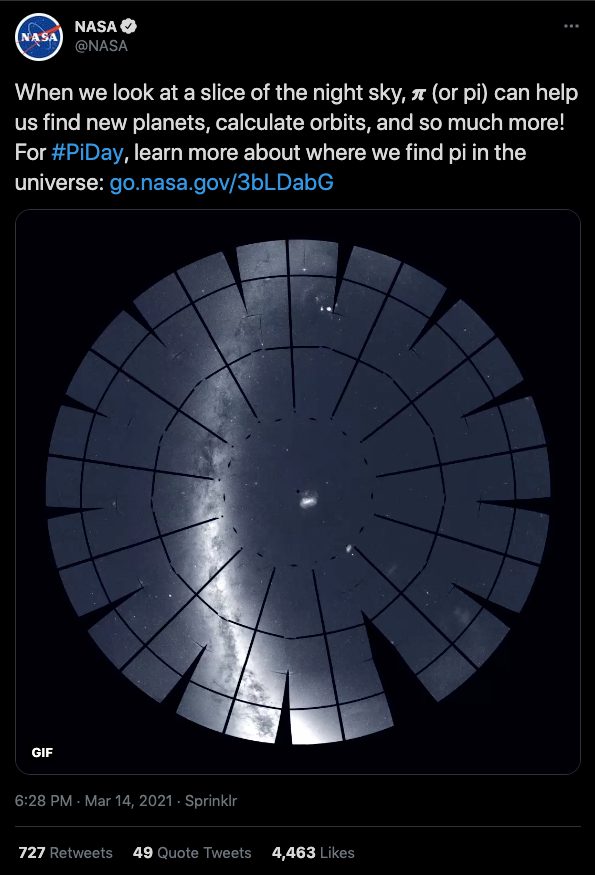
3. Department of Defense
The Department of Defense (DoD) Facebook profile is a prime example of government and social media. The team does a great job of humanizing the agency on its platforms.
The DoD is America’s largest government agency. The department’s stated aim is to “provide the military forces needed to deter war and ensure our nation’s security”, but what specifically do all those people do on a daily basis?
Using the hashtag #KnowYourMil, the agency showcases some of the more exciting, unusual, and unexpected projects it’s involved in across the world, such as supporting scientific research in the Antarctic:
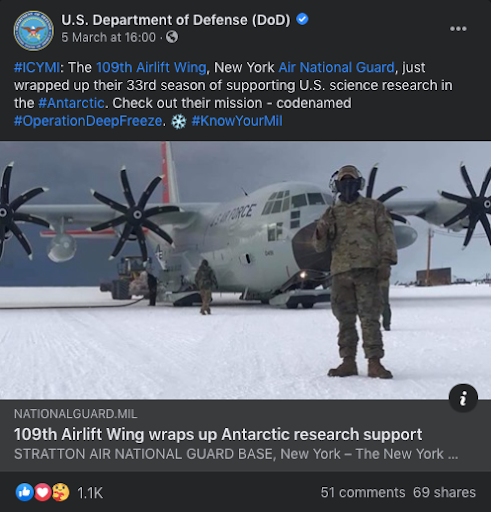
4. Federal Emergency Management Agency
Social media isn’t all about getting engagement for the sake of engagement. At times of crisis, it plays a key role in ensuring crucial information can be distributed effectively and at scale.
The Federal Emergency Management Agency clearly recognizes this. During major incidents, its social profiles provide a constant stream of information, including the important task of disproving potentially damaging rumors.

What’s more, it often does this through visual content like infographics, which are highly shareable and help the agency to communicate its points in a way that’s easily understandable.
5. Iowa Department of Natural Resources
Anyone working in social media has heard the phrase “don’t feed the trolls”. It essentially means: “Don’t get involved in conversations on social media, because it’ll just end badly.”
That might be a safe approach to social, but if you follow that self-imposed rule to the letter, you’ll miss out on a lot of opportunities to engage your audience and build a real community around your work. After all, it’s called “social” for a reason.
Iowa’s Department of Natural Resources understands this, and isn’t afraid to join in with discussions and respond to questions:
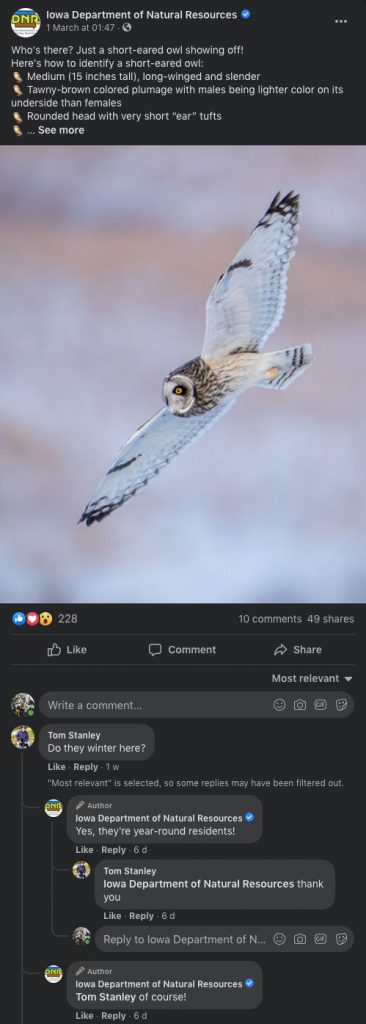
The lesson here? Always have someone monitoring your social notifications to look out for instances where you can join in with the conversation in the comments section – it’s such a simple opportunity to engage your community and win some positive sentiment.
6. Transportation Security Administration
If NASA is a prime example of a social media team making the most of an already-interesting subject matter, the Transportation Security Administration (TSA) demonstrates that with a bit of creative thinking, your social presence can be way more engaging than it probably should be.
Over the years, the TSA has racked up close to one million followers on Instagram – the spiritual home of aspirational lifestyle influencers and envy-inducing travel bloggers.
How does it do this? By demonstrating its sense of humor.
It turns out that a lot – and I mean a lot – of passengers try to sneak some pretty bizarre stuff through airport security. The TSA knows this and has made it the basis of its whole presence on the image-sharing site.

As Bob Burns, the agency’s former public affairs specialist and social media lead explained: “When people come to our account, they’re kind of taken aback by the tone we use – in a good way. ‘Is this really a government agency having fun and talking to me like I’m a human?’ Which makes them want to follow us.”
7. City of San Diego
As a local government account, the City of San Diego’s Twitter profile has a duty to inform its followers, the majority of whom presumably live in the Californian city.
Fulfilling this task naturally involves keeping tabs on the news agenda, responding to media reports on San Diego, and – when relevant – putting its own spin on events.
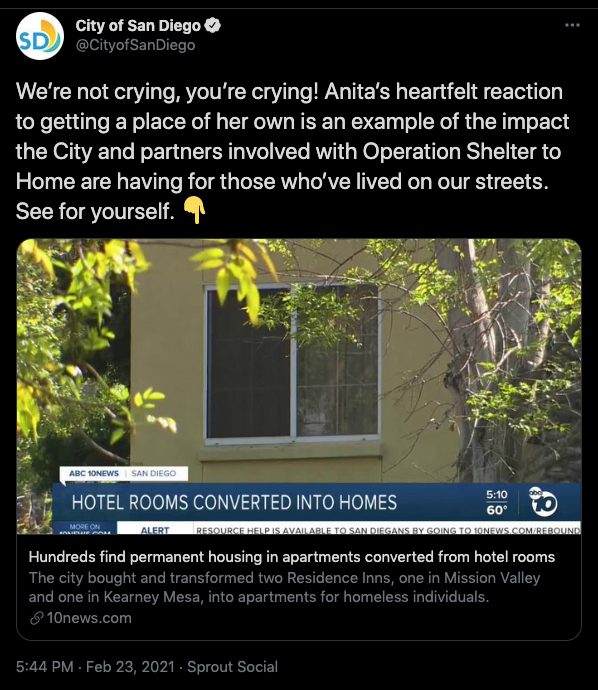
Because it’s not afraid of demonstrating a little emotion on the timeline, the city’s social media team demonstrates that the local authority is at the heart of its community and genuinely cares about what’s going on in the area.
It’s a far cry from the sort of dry and overly professional content you might expect a local government agency to adopt.
8. Department of Health & Human Services
As we’ve seen throughout this article, part of running a successful social feed – as a government agency, or in any other sector – boils down to identifying the most effective content type for communicating your message.
The Department of Health and Human Services (HHS) understands this and makes use of a wide range of visual content formats, including static imagery and short-form video.
Clearly, the department is well aware of the value of video content on social platforms. Indeed, on Facebook, videos generate more engagement than any other content type, with an average engagement rate of 6.09%.
With those sorts of numbers, it’s absolutely worth investing a little time in building simple, slideshow-style video content, like the DHHS has done here:
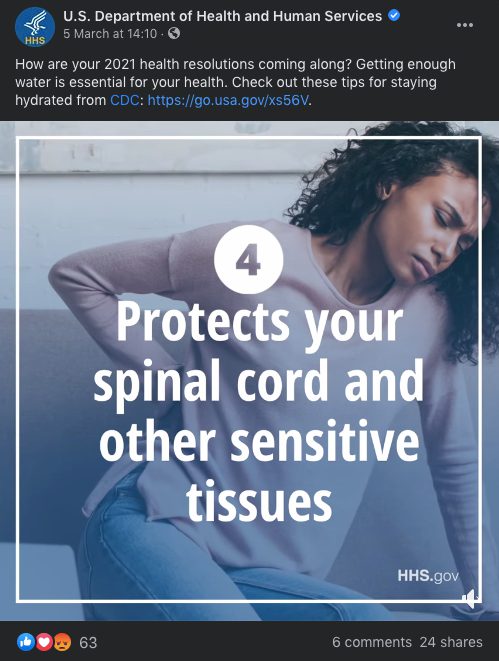
9. Maryland Center for School Safety
One of the biggest social media challenges facing government agencies is the need to create accessible content, communicating often complex messaging in a way that’s immediately understandable.
To do this, Maryland Center for School Safety utilizes a wide range of content formats to get its points across in the most meaningful and impactful ways.
For instance, rather than simply writing a text post incorporating statistics on cyberbullying, the agency has put in a little extra effort and created a simple but effective visual post instead.
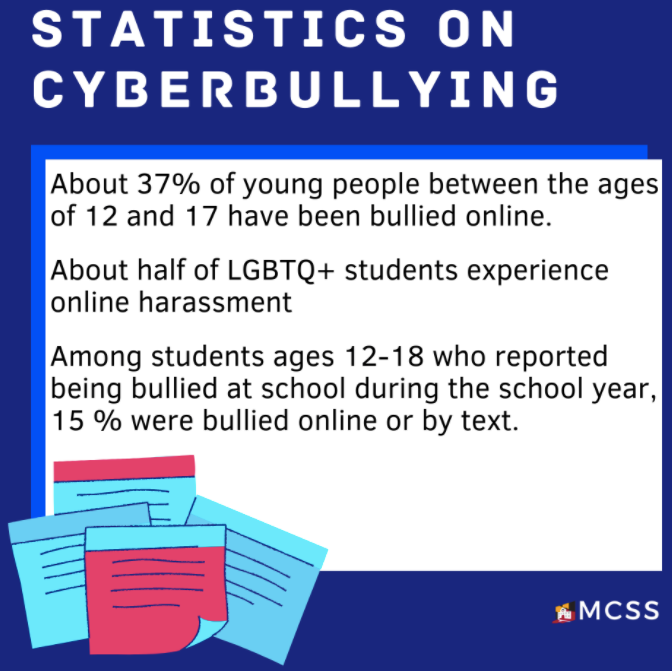
Why go to this trouble? It’s simple: social posts accompanied by visual elements perform better. In fact, according to BuzzSumo, Twitter posts with images generate 2.3 times the engagement of posts without images.
10. Lexington County Sheriff’s Department
It’s all well and good marveling at the incredible social content being produced by the likes of NASA and the DoD, but most government agencies just aren’t on the same scale.
Small agencies have small teams and small budgets. They might only have a single person responsible for handling a whole range of social platforms – and that person might also have other responsibilities, like writing blogs, creating visual content, and responding to media inquiries.
How can a tiny team possibly find the time to post creatively?
One way is to let technology do some of the hard work for you. Tools like Canva allow you to take a standard, uninspiring post and polish it up into something that has the power to stop people in their tracks as they scroll through a crowded timeline.
This is exactly what Lexington County Sheriff’s Department does, brightening up a simple public service announcement with a slideshow that makes the post far more engaging.

11. Pasco Sheriff’s Office
Instagram Stories can effectively boost your reach and engagement, with about 500 million people watching them daily.
Many marketers use Instagram Stories to share quick, unpolished photos and videos without interrupting the curated flow of their grid. But they’re also a fantastic way to create informative content that retains a prominent position at the top of your profile.
Take a look at how Pasco Sheriff’s Office leverages Insta Stories to segment content and make it simple for followers to navigate:
Some of those categories feature timely content, but others — like Safety Tips and 9 PM Routine — are evergreen topics that might be useful to viewers at any time:
This approach gives first responders a helpful way to issue safety advice or remind audiences what to do in an emergency without creating new content every single time.
12. VDOT Northern Virginia
Because pinned tweets remain at the top of your feed until you un-pin them, they provide a perfect opportunity to demonstrate who you are and what you stand for.
Here’s an excellent example of what that might look like, courtesy of VDOT Northern Virginia:
— VDOT Northern VA (@VaDOTNOVA) November 3, 2022
Plenty of research suggests it’s worth communicating your brand identity and mission statement through social media.
For instance, Google found that four in five consumers prefer a brand’s values to align with theirs, while three-quarters have parted ways with a brand through a perceived conflict in values.
So how does VDOT Northern Virginia’s winning combination of traffic updates and kindness work in practice?
It essentially translates to lots of awesome cat videos incorporating public safety-related messaging:
Morning Missy Message®️
One of my sincerest wishes for NOVA, and everywhere really, is that we all look out for each other. If we all did that, if we all took that extra glance or extra few seconds, it could literally save a life. #NWZAW #LoveYou #Orange4Safety pic.twitter.com/tr48W8Yy64
— VDOT Northern VA (@VaDOTNOVA) April 18, 2023
If you can communicate valuable information in a way that makes people smile, that’s definitely a win in our book.
13. Sacramento Fire Department
One of the key opportunities for government on social media is to present a more human face to their audiences.
According to Sprout Social, 70% of people feel more connected to brands when the CEO is active on social, while 72% feel similarly when employees share information about a brand online.
What does this tell us? Showcasing the real people behind your agency can help you build more authentic, trusting, and longer-lasting relationships with your followers.
One agency that consistently gets this right is Sacramento Fire Department, which frequently shares information about its employees — from seasoned veterans to recruits.
This helps audiences build a more meaningful connection with the department, making it seem less like a faceless agency and more like a bunch of real, hard-working people.
14. Washington State Department of Natural Resources
Being funny isn’t the most effortless skill for government agencies to pull off. After all, it often clashes with the serious role of government business.
But if you get it right, the rewards can be significant, with research revealing that humor is better received than any other type of marketing messaging:

We’re not suggesting that you abandon your existing social media strategy and start posting knock-knock jokes 24/7. Instead, learn from the approach of the Washington State Department of Natural Resources, which often uses humor to educate and inform followers.
The following post is a fantastic example:
View this post on Instagram
Let’s be honest: on the face of it, an augmented reality sandbox for geological modeling has a pretty niche appeal, and it doesn’t exactly scream “viral content opportunity.”
But by crafting a funny caption, the agency makes the content far more relatable, which helps to demonstrate the expertise of its staff and their passion for the job.
15. South Metro Fire Rescue
South Metro Fire Rescue has become well known for its YouTube channel, which has notched up over 182,000 subscribers.
Much of this success stems from its strategy of sharing on-the-scene footage from emergencies, often annotated with captions to help viewers understand the challenges presented by individual incidents. These videos frequently generate tens of thousands of views:
Importantly, this content doesn’t just help the fire service boost impressions and engagement. It also effectively showcases the agency’s vital work, demonstrating how South Metro crews keep Colorado communities safe.
16. Detroit Police Department
Research from Deloitte reveals that local government agencies are far more trusted than their state and federal-level peers, scoring higher across all metrics — particularly humanity and transparency:
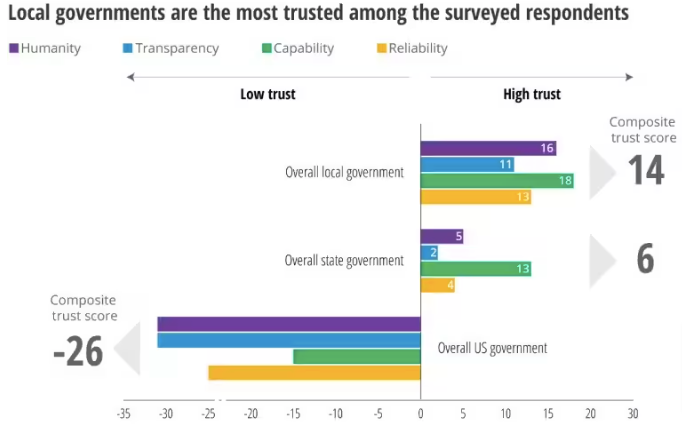
This is likely because local agencies can be more visible to their audiences. They can attend local events, visit local institutions, and generally be seen by the communities they serve.
You should use this to your advantage as a local government agency. Not just by being active in your local area but by shouting about it on social media, just like Detroit Police Department does here:
They also routinely share footage of officers out and about in the community, like this Facebook Live video showing new graduates setting off on their traditional run with the city’s police chief:
While we’re on the subject, we’d recommend changing that if you’ve never shared a Facebook Live video.
They’re highly engaging, with research from Social Insider revealing that live Facebook videos see average engagement rates of 0.4%, compared to 0.31% for pre-recorded videos.
17. Consumer Product Safety Commission
Every social media marketer working for a government agency wants to build trust with their audiences.
This brings us to another juicy fact from Deloitte’s research: when people are pleased with an agency’s digital services — ease of use, effectiveness, and data protection — they’re more likely to view the agency as trustworthy.
So it makes sense to point followers in the direction of your digital services whenever possible, just like the US Consumer Product Safety Commission did here:
It’s a long owl. pic.twitter.com/uVi4Nvq1s1
— US Consumer Product Safety Commission (@USCPSC) April 15, 2023
This is such a simple opportunity for government on social media.
After all, you (presumably) already offer many digital services, and it’s in your best interests for people to use them. So try using social media to steer followers toward your services while giving helpful guidance on who they’re for and when to use them.
18. Small Business Association
Chances are you have a marketing calendar packed with events and holidays relevant to your agency and audience.
In our following example, the US Small Business Association (SBA) demonstrates how to capitalize when those big days arrive.
Tax Day is a big deal for small businesses nationwide. And unsurprisingly, Google Trends data shows us that search activity doesn’t peak until the week before:
When such a big event comes around, creating multiple posts around it makes sense. In this case, the SBA reminded business owners who had yet to file their taxes…
…and also took the opportunity to demonstrate how the agency’s services have helped small businesses help other people to prepare and file their returns:
19. City of Las Vegas Government
It’s always crucial for government social media marketers to consider the most effective ways to communicate with their audience — in terms of content format, messaging, and language.
According to the US Census Bureau, the proportion of people in the US who spoke a language other than English at home rose from about one in 10 in 1980 to almost one-fifth in 2019, with Spanish comfortably the most common non-English language.
If you serve an area with a large Hispanic community, it makes sense to share multilingual content. The City of Las Vegas Government frequently uses this tactic to make its social content more accessible:
As the City of Las Vegas demonstrates, this approach doesn’t necessarily mean creating different content for different languages. Instead, create joint English and Spanish-language captions to ensure your message hits home.
20. Port of Seattle
Awareness days allow government agencies to tap into a broader conversation and reach new audiences.
But they can be something of a double-edged sword. Get your messaging wrong, and you risk looking out of touch.
The Port of Seattle regularly references awareness days and campaigns in its social media marketing, like in this post celebrating Women’s History Month:
Importantly, whenever the agency joins the conversation, it never comes across as self-focused. Instead, Port of Seattle shines the light on people affected by the campaign, holiday, or awareness day.
Generally, if you can’t get involved meaningfully and authentically, it’s probably better not to say anything. Learn more in our guide: Viral and Cultural Moments – How and When Brands Should Tap into the Conversation.
21. Alaska State Troopers
For most organizations, social media is solely a promotional opportunity, allowing them to reach new audiences and showcase their products or services.
But for government agencies, things are a little different. Sure, it’s still important to discuss who you are and highlight your fantastic work. But you can also use your social channels to share valuable public safety information, just like the Alaska State Troopers regularly do through Instagram Reels:
View this post on Instagram
When sharing these types of informational posts, it’s a good idea to hand the camera (or, more likely, the iPhone) over to front-line agents rather than your social media team. It makes the content feel more authoritative and puts a human face on your organization, helping build a stronger connection with your audience.
22. Larimer County Sheriff’s Office
Government agencies do serious, vital work. But chances are, your team occasionally comes across something unusual in the line of duty. Often, those incidents can make for fantastic, engaging social media content.
For an example of the sort of content we’re talking about, check out this post from Larimer County Sheriff’s Office about an officer who freed a skunk from a jar of peanut butter:
At time of writing, this post had generated 1,500+ reactions, plus dozens of comments and shares — way more than they usually see.
As well as being a generally fun and quirky post, this example demonstrates that Larimer County officers are active in their community, seeking ways to help the people — and, apparently, the animals — they serve.
23. Cambridge Police
Another underrated benefit of social media for government agencies is its ability to support your recruitment process.
According to CareerArc, 58% of job seekers use social platforms to find information about potential employers, and 48% of Gen Z and Millennial-aged candidates with work experience have applied for jobs they found on social media.
In our next example, Cambridge Police shows us how a platform like Instagram can help government agencies reach potential applicants:
View this post on Instagram
This video works because it gives us a compelling narrative, highlighting the officer’s journey from temping to admin work to becoming a police officer. It’s an extremely engaging format, with Google research revealing that 94% of viewers believe good content tells a story.
Hopefully, this video inspired others to follow in Officer Garcia’s footsteps. But even if it didn’t, it still generated a ton of engagement, with over 99,000 views at the time of writing — making it their highest-performing Instagram Reel.
24. US Department of Education
Sticking with the storytelling theme, the US Department of Education regularly uses this tactic to highlight individual employees’ career journeys and achievements like Beatriz Ceja.
This tactic works well when discussing awareness days and events like Hispanic Heritage Month. Still, it’s just as effective for recognizing and celebrating the everyday efforts of team members across your agency.
25. Clovis Police Department
Organizing events is a fantastic way for government agencies to engage with their local communities. But those events require a concerted marketing effort to make them successful.
Clovis Police Department is well aware of this. It organizes the annual Clovis Night Out — a family-friendly event intended to celebrate safety in the community — and has made social media a key element of its promotional strategy.
This ranges from sharing clips from previous editions:
View this post on Instagram
To announcing the vendors and acts scheduled to appear at future events:
View this post on Instagram
This all helps to drum up excitement for the event and present Clovis Police Department as an agency that cares about its community.
26. Orange County Sheriff’s Department
Not everyone has experience in contacting first responders for assistance. When you need to call them, it can feel pretty stressful. So, it makes sense for police, fire, and ambulance services to explain how it all works.
Orange County Sheriff’s Department got it right with this post (which, sensibly, they’ve pinned to the top of their Instagram wall):
View this post on Instagram
By spelling out the types of questions its dispatchers ask, the agency demystifies the whole process of calling 911, while also helping callers provide the most important information.
27. New Jersey Department of Transportation
Understandably, your audience wants to know how your agency’s budget is being spent. Not only does it directly affect them, but it’s being funded by their tax dollars.
So while you likely can’t be 100% transparent on social media, it’s definitely a good idea to share as much detail as you can about upcoming projects, just like the New Jersey Department of Transportation did in this Facebook post:
But transparency isn’t just about telling your audience how you plan to spend your budget; it encompasses everything you do.
To that end, the New Jersey Department of Transportation also takes the time to discuss the progress of its various programs.
They even give insight into their employee engagement activities.
Combined, all these elements help New Jerseyans better understand how the agency works for them.
28. National Science Foundation
Like NASA, the National Science Foundation (NSF) doesn’t need to persuade audiences that it does fascinating, valuable work; people already want to learn more about the agency.
But just because the public is interested in what you do doesn’t mean they understand it. The agency’s biggest social media challenge is communicating highly complex and technical subjects in plain language that anyone can follow.
It does this by sharing detailed captions that discuss the relevance of its projects.
View this post on Instagram
They also create a whole library of informative evergreen videos that reveal the findings of various NSF-supported initiatives:
All of which means that you don’t need a science degree to appreciate the agency’s work.
29. Adams County Government
From fighting fires to fixing collapsed bridges to exploring volcanoes, government agencies do plenty of high-profile, attention-grabbing work.
In reality, most of your agency’s day-to-day activities will be far less glamorous. But that doesn’t mean people shouldn’t hear about them. Social media gives you the perfect opportunity to showcase actions and achievements that would otherwise fly below the radar.
Colorado’s Adams County Government is consistently excellent at celebrating these types of lower-key, but still highly impactful, projects:
It would be easy to dismiss this type of work as uninteresting and unsuitable for social media. Instead, the agency takes the time to explain why this specific project matters — and even demonstrates the technology that helps it protect communities by identifying gas leaks.
With only a little effort, it transforms an otherwise easily overlooked activity into an interesting and informative piece of content.
30. City of Tampa, FL
We’ve already discussed how government agencies can use social media to keep their audiences up to date with breaking news and events. Now let’s look at another method from the City of Tampa, which does this through Instagram Reels — such as in this example about Hurricane Idalia.
View this post on Instagram
These videos typically feature high-ranking figures like Mayor Jane Castor, which helps them feel more authoritative.
Most importantly, the City of Tampa strives to give simple, clear actions to its audience in the event of emergencies, such as instructing them to tidy away or tie down yard furniture. That way, it’s easy for viewers to understand what to do next.
And, as you’ll notice, these videos are subtitled — an essential move given that up to 78% of social media users prefer to view videos with the sound off.
Are you interested in learning more about social media for government agencies? Check out our next government social media conference!



 Image source
Image source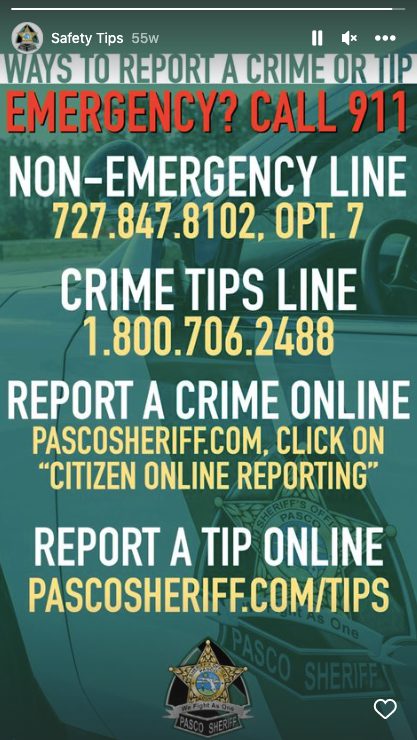 Image source
Image source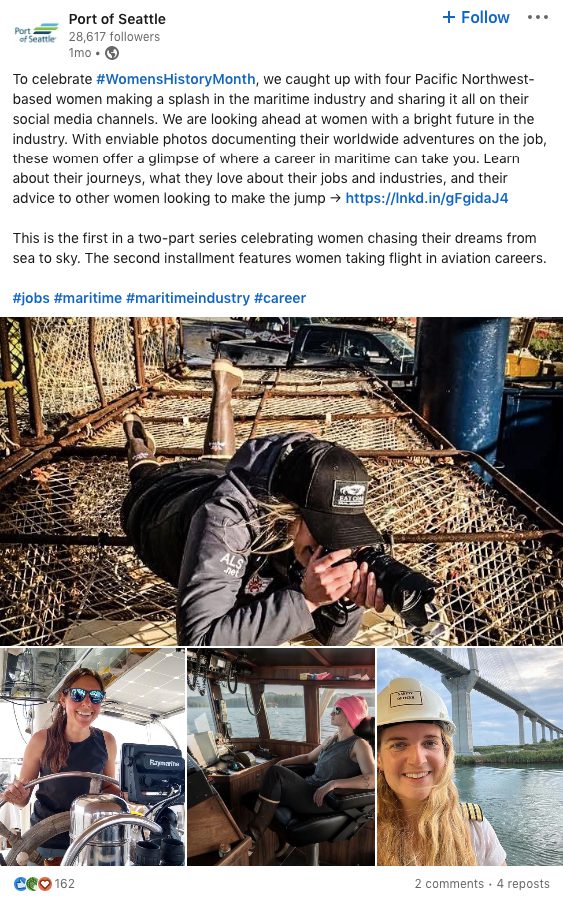 Image source
Image source




